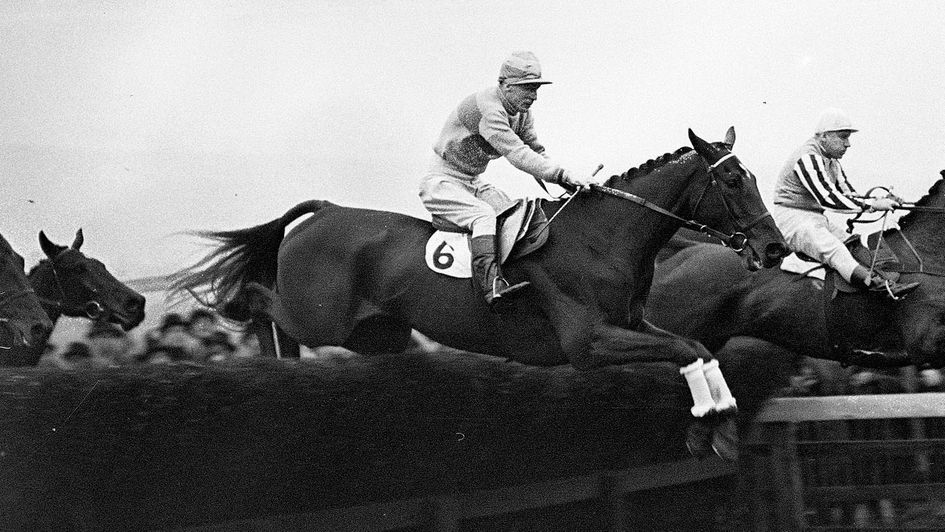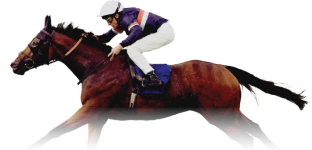In the build-up to the Randox Grand National will be profiling some of the Aintree greats over the years. We start with Golden Miller.
The most famous chaser between the wars was Golden Miller and, fittingly, he can still lay claim to two impressive feats which have remained untouched in the years since – he won the Cheltenham Gold Cup a record-breaking five times, whilst he is the only horse to have completed the Gold Cup-Grand National double within the same season. An estimated crowd of 250,000 was at Aintree for the 1934 National and they witnessed an imperious display from Golden Miller, who was fresh from his third Gold Cup win and shouldered 12-2 to beat Delaneige (receiving 10 lb) by five lengths, with old rival Thomond II a further five back in third.
A fast pace on good ground, combined with Golden Miller’s smart turn of foot, led to the course record being broken – a time that would stand until Red Rum and Crisp smashed it thirty-nine years later. It is fair to say there was a “golden age of steeplechasing” during the 1930s and press cuttings from that era leaves no-one in any doubt as to who the star performer was, with the Sporting Life’s front page after the 1934 National dubbing Golden Miller “The Finest Chaser of the Century”.
Alas, Golden Miller’s four other National appearances provided the source for plenty of frustration and controversy. His jumping didn’t hold up when favourite for the 1933 National, unseating at the second Canal Turn (when close up) having survived a bad mistake at second Becher’s. The fall-out from that was nothing compared to the 1935 National, however. Carrying top weight of 12-7 in a field of twenty-seven, Golden Miller was sent off at just 2/1 – the shortest-priced favourite in the history of the race.
Disaster struck at the open-ditch eleventh, however, as Gerry Wilson was “unseated” after an awkward upright leap by Golden Miller, who’d slowed just before the fence. Conspiracy theories abounded immediately – the bookmakers had colossal liabilities and trainer Basil Briscoe suggested Wilson had jumped off, whilst eccentric owner Dorothy Paget blamed Briscoe for overtraining the gelding. Pathe pictures of the incident were inconclusive, though it was undoubtedly a soft unseat and Wilson lost the ride soon afterwards. The jockey vehemently maintained his innocence: “I’m convinced The Miller was frightened by what seemed like a mirror glinting in his face. Something startled him.” Subsequent events rather vindicated that view, as Golden Miller refused at the same fence in both 1936 (after being remounted when brought down at the first) and 1937!
GRAND NATIONAL RECORD
1933 – unseated rider 24th (Canal Turn)
1934 – WON
1935 – unseated rider 11th
1936 – refused 11th
1937 – refused 11th
TRAINER
An old Etonian, Basil Briscoe ran a mixed yard and struck gold with a couple of jumpers in the early-1930s – he trained Insurance to win two Champion Hurdles and stable star Golden Miller won his first three Cheltenham Gold Cups ( as well as the Grand National) while under Briscoe’s care. Briscoe, like owner Dorothy Paget, was a notably fearless gambler and largely struggled without Paget’s powerful string of horses after their acrimonious split following the 1935 National, being forced to give up training when declared bankrupt in 1940. He died, aged just 48, eleven years later.
JOCKEY
Gerry Wilson took over the ride on Golden Miller for the 1933/4 season and was in the saddle for that historic Gold Cup-Grand National double. He was to lose it in 1935/6, having been unseated on three of his last four rides on the gelding (including that infamous incident in the 1935 National). Despite that setback, he was the leading jumps jockey of the era, winning the championship no less than seven times, though his National record was poor bar that 1934 victory.
FACT
Wealthy heiress Dorothy Paget spent lavishly on horses, though she became a household name just as much for her eccentricities as for achievements on the racecourse – her legend was built on stories about reclusive and odd behaviour, which involved unconventional time-keeping (she regularly turned night into day), a voracious appetite and puzzling dress sense. Nevertheless, she’d amassed an astonishing 1,532 wins (Flat and jumps) at the time of her death, aged just 54, in 1960.









